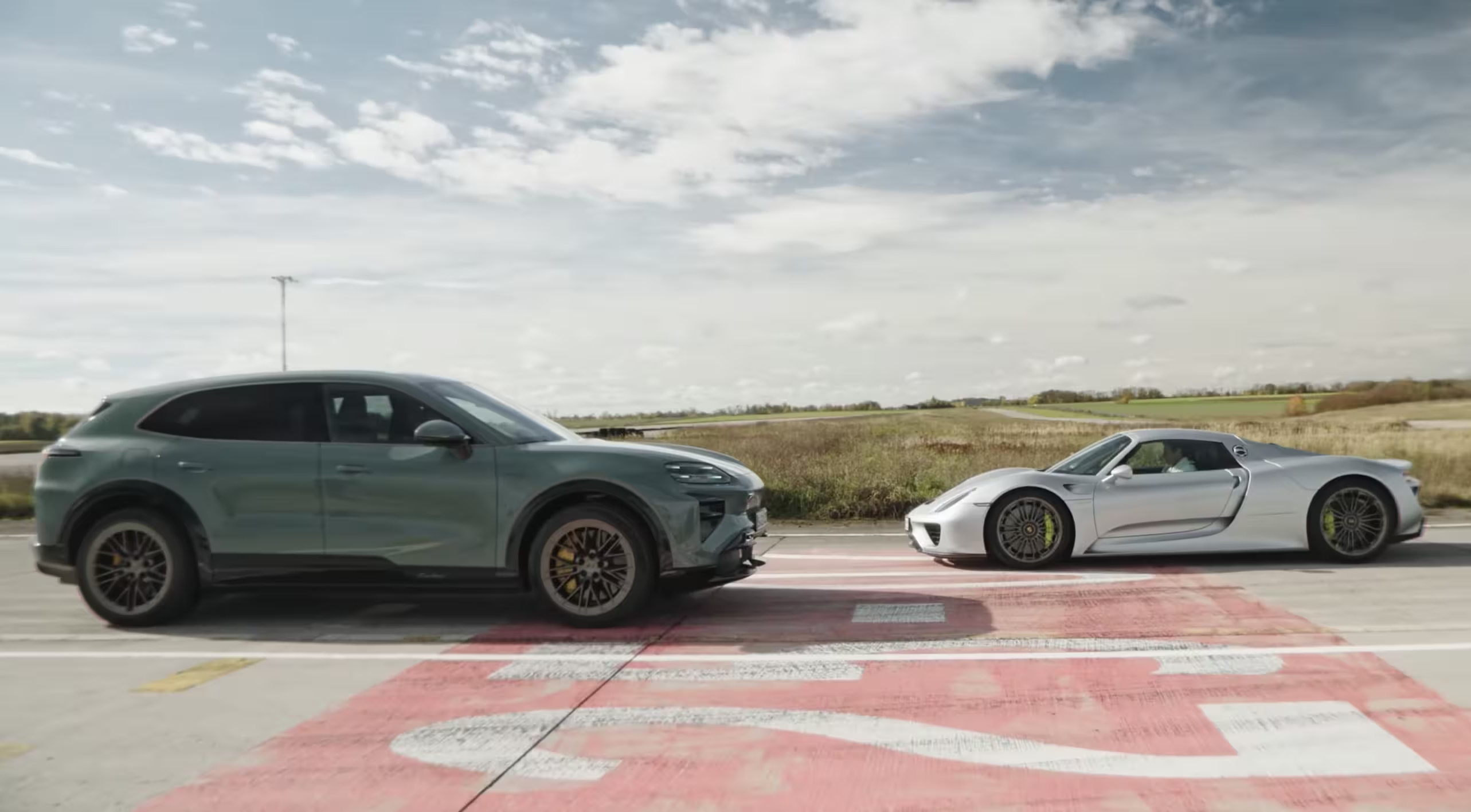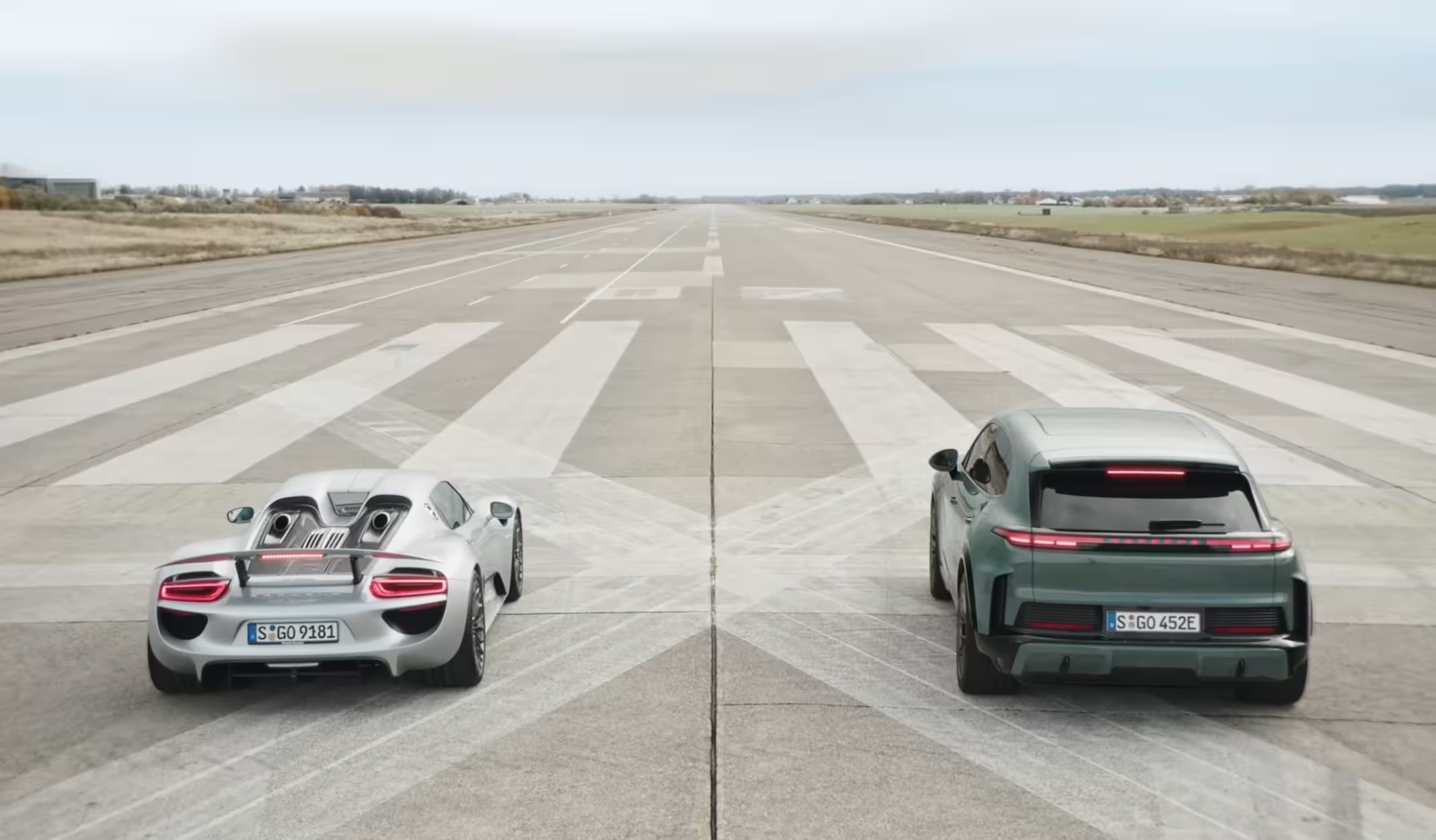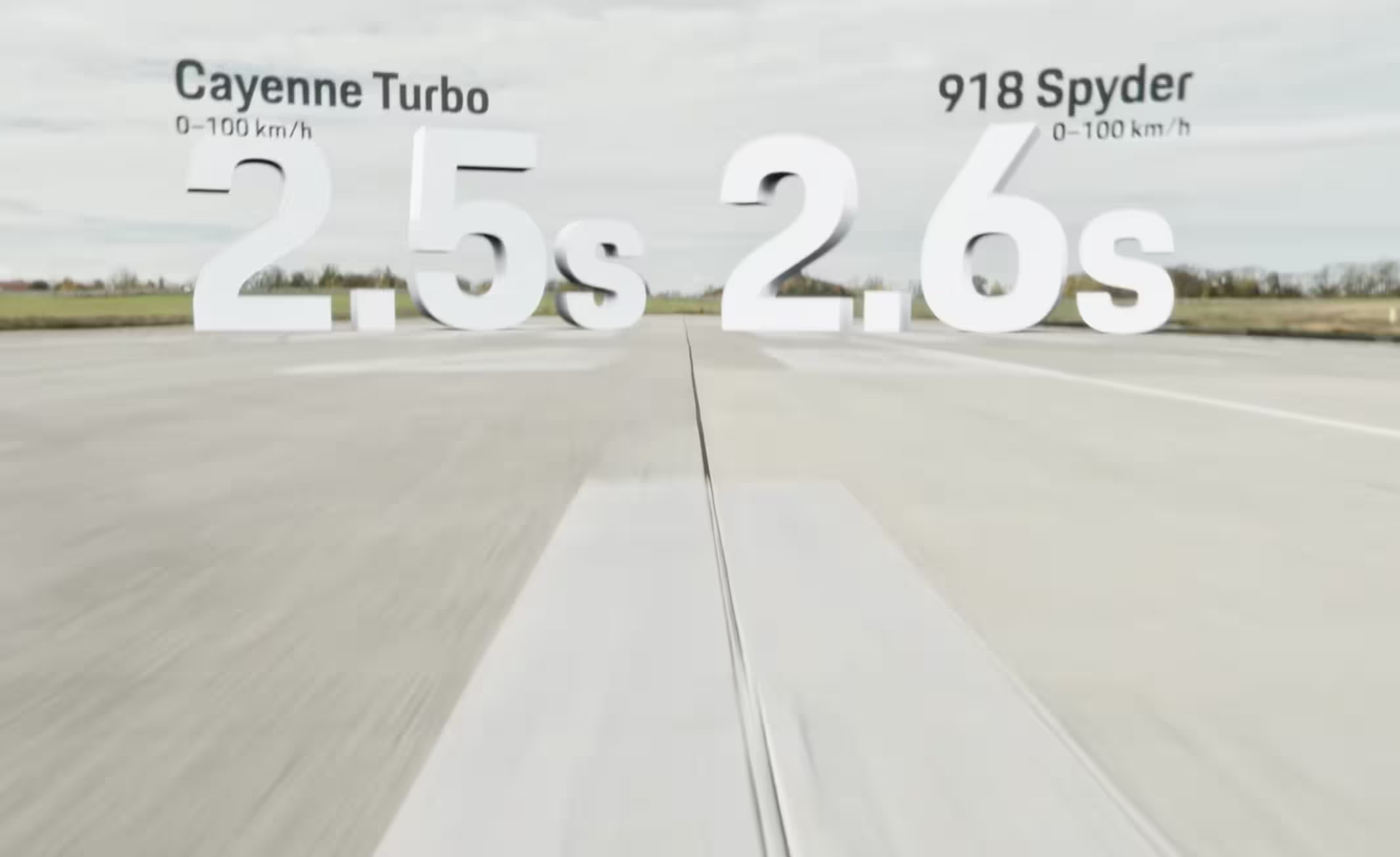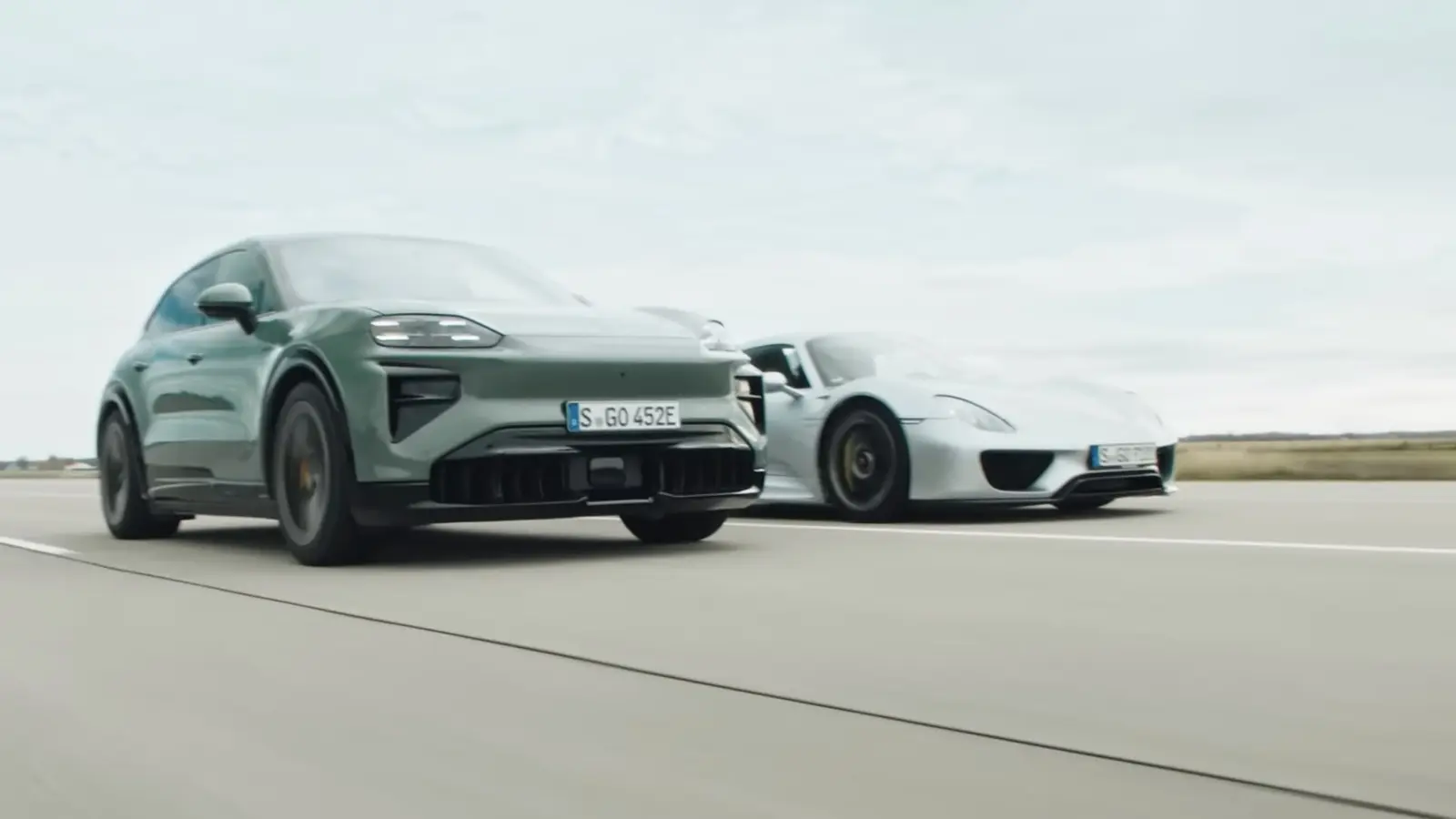4 Minutes
Porsche's new flagship SUV takes on a 2013 hypercar
Porsche has rolled out its most powerful production model to date: the Cayenne Turbo Electric. Despite being the heaviest Porsche ever built, the electric Cayenne was recently matched against the 2013 918 Spyder in a publicity run that highlights how electric powertrains are reshaping performance expectations.
The matchup is striking on paper: a mid-engined plug-in hybrid icon from the Frankfurt Motor Show versus a modern, dual-motor electric SUV. Porsche chose a dramatic way to demonstrate that mass doesn't automatically mean a lack of pace.

Specs that headline the story
- Cayenne Turbo Electric: 1,139 hp, dual motors (front and rear), 0-60 mph in 2.4 seconds, quarter-mile in 9.9 seconds, top speed 162 mph (261 km/h), curb weight about 5,831 lb (2,645 kg).
- 918 Spyder (2013): mid-mounted 4.6-liter NA V8 plus two electric motors, combined 875 hp (886 PS) and 944 lb-ft (1,280 Nm) of torque, 0-60 mph in 2.2 seconds, curb weight around 3,602 lb (1,634 kg) with Weissach Package and a 6.8-kWh battery.
Those figures underline the new reality: peak output from an electric SUV can eclipse even a celebrated hybrid hypercar, but it comes with a substantial weight penalty.
Track stunt, real questions
To settle the score visually, Porsche staged a head-to-head run featuring former F1 driver and Porsche ambassador Mark Webber in the 918 Spyder and Formula E development driver Gabriela Jilkova piloting the Cayenne Electric. The vehicles are fundamentally different — one is a focused, mid-engined hybrid sports car, the other a heavy, four-seat electric SUV — so comparing them is part spectacle, part demonstration.
As Webber dryly observed during the event, 'This is apples and oranges.' Gabriela, meanwhile, smiled knowingly: the electric Cayenne can exploit routes the 918 simply wasn't designed to take, including off-tarmac shortcuts that level up the SUV's real-world attack.

Why the stunt matters
The race isn't about declaring an unequivocal winner of two vehicle archetypes. Instead, it sends a clear message to enthusiasts and buyers: electric powertrains deliver hypercar-caliber thrust, and manufacturers can package that performance into family-friendly SUVs. For Porsche, the Cayenne Turbo Electric is a statement of technical capability and market positioning — an attempt to keep the brand's performance halo intact while responding to electrification trends.
Key takeaways:
- Power vs. weight: electric motors supply enormous instant torque, but large battery packs add significant mass.
- Real-world tactics: the Cayenne's ability to use non-tarmac lines during the video is a reminder that context matters in a head-to-head.
- Brand strategy: Porsche is bridging legacy performance with EV tech to retain credibility among petrolheads.

Final thoughts
The Cayenne Turbo Electric doesn't make the 918 Spyder obsolete; it reframes the conversation. The 918 remains a technological milestone and a focused driving machine, while the Cayenne shows how electrification lets SUVs achieve astonishing acceleration and quarter-mile times more associated with supercars. Whether you prefer lightweight purity or brute-force electric pace, Porsche has given both camps something to debate — and plenty of headline-grabbing numbers to argue about.
'No goats were harmed in the making of the video,' the brand joked — but the stunt certainly stirred conversation about what performance means in the EV era.
Source: autoevolution


Leave a Comment